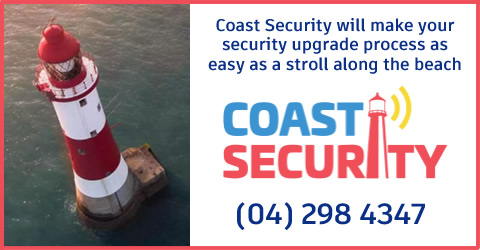A convoy of enraged Capital Connection patrons arrived at the Waikanae train station yesterday in response to KiwiRail’s proposed disconnection of the commuter train service between Palmerston North and Wellington.
Over 50 cars with 100 people in them arrived en masse, tooting their horns as they approached Waikanae station and continued to toot non-stop for 10 minutes after their arrival.
The convoy started at the Palmerston North station, and made stops at the Shannon, Levin and Ōtaki stations (the three stops before Waikanae on the Capital Connection) for additional protestors to join in.
The Capital Connection connects passengers from the Manawatu and Horowhenua-Kāpiti regions to Wellington, and if KiwiRail’s proposal to shut it down goes ahead, it will leave commuters from the north of Waikanae with no train service to Wellington.
The New Zealand Transport Agency has recently rejected a proposed rescue package for the endangered service because they don’t believe it relieves traffic congestion between Palmerston North and Waikanae.
The convoy was to prove that if the Capital Connection was stopped, it would create more traffic congestion and parking problems around Waikanae.
The protestors made their way to the Waikanae Memorial Hall next to the station for a meeting hosted by Labour’s Ōtaki electorate committee.
At the meeting, convoy leader and Palmerston North MP, Iain Lees-Galloway opened the meeting with a speech followed by speeches from regional councillors and protestors.
Notable absentee from the meeting was Ōtaki MP, Nathan Guy who was invited.
Mr Lees-Galloway said that the idea of people north of Waikanae can just drive there smoothly is not true.
“We caused mayhem, if we can cause this on a Sunday morning imagine what would happen during the week,” said Mr Lees-Galloway.
It was recently announced that the Greater Wellington Regional Council in partnership with Horizons will be willing to partially fund the service in response to KiwiRail’s argument that the Capital Connection is no longer economically viable.
However Greater Wellington Regional Council and Horizons will only provide funding if the NZ Transport Agency (NZTA) also chips in for the service’s estimated $435,000 shortfall.
Mr Lees-Galloway believes that the ball is now in NZTA’s and transport Minister Gerry Brownlee’s court as they have the power to and resources to save the service.
“The regional councils are doing the right thing, but we need the government to listen,” said Mr Lees-Galloway.
Regional Councillor, Nigel Wilson said that the council and Horizons are “100% on board” with saving the Capital Connection and expressed his disappointment in Mr Guy’s absence from the meeting.
“Our community is not best served by stopping the Capital Connection and for our MP not to be here (to listen to the community) is appalling,” said Mr Wilson.
Former national advisor for crash and investigations, and Waikanae resident, Errol Brown also spoke at the meeting, and he said that not only will traffic congestion be a problem if the Capital Connection shuts, but it will also cause safety problems.
“Right now you’re promoting safety (by having drivers on the train), if you increase volume you’ll increase the crash rate,” said Mr Brown.
Protestors and patrons of the Capital Connection in attendance expressed their disappointment at the potential closure of the service.
James O’Hagan, from Levin catches the train to get to work in Wellington every day. He moved out to Levin with his wife and infant daughter last year from Wellington to be closer to his in-laws but may regret that decision now.
“We moved up to Levin to be closer to the in-laws and because I knew the Capital Connection was available to use, we might not have moved up if it wasn’t,” said Mr O’Hagan.
Shannon resident, Bob Pearce hops on the train to get to work in Wellington, and thinks the termination of the service will negatively affect small towns like Shannon as some residents may consider moving closer to Wellington as a result.
“It’ll impact small businesses and towns like Shannon,” said Mr Pearce.
Copyright © 2024 | WordPress Theme by MH Themes






